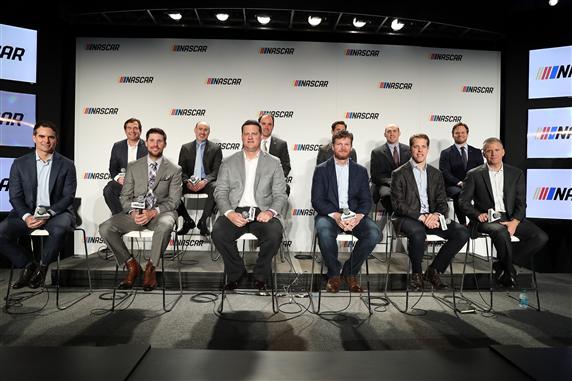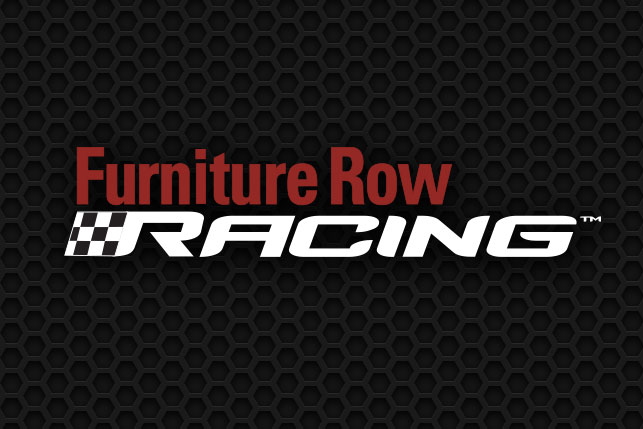Alright NASCAR, you’ve peaked the interest of this skeptic and I’m curious to see where these new “enhancements” lead us this season and beyond.
If you haven’t heard by now, the sport announced some rather radical changes – or “enhancements,” which is one of a few new buzzwords that are now part of our lexicon – which, in short, include segment-based race events for all three of the national touring series.
It was confusing as hell to learn and I just barely understand it now. I plan to better understand it by the time I head to Atlanta Motor Speedway to work my first race this season.
But for now, it sounds like an idea that’s worth giving a chance. So let’s give it a chance.
If you haven’t already jumped straight to the comment section to call me a “paid shill for NASCAR,” hear me out.
I’ll start right off the bat by saying it’s gimmicky and contrived. This is something I’d expect to see done in the All-Star Race. In fact, some elements of this have been done in the All-Star Race such as the segments.
I also wish NASCAR wouldn’t have added these “enhancements” to events like the Daytona 500, the Coca-Cola 600 and the Bojangles’ Southern 500. These three events are the crown jewel races and should stay gimmick-free, especially Darlington Raceway, who’s tagline is “the tradition continues.” Yeah, nothing says tradition like a 500-mile race at a track like Darlington with a bunch of contrived elements.
Most of all, Cautions should only be thrown when there’s an actual hazard on the track and not just to bunch up the field to jive up the race. This was my biggest grievance with the caution clock. It wasn’t designed to stop frequent hazards. It was meant to disrupt the flow of the race every 20 minutes, just for the sake of it, and have a restart, just for the sake of it. I won’t call it manipulation by NASCAR as others have because that implies the sanctioning body had nefarious purposes for implementing it. It was simply an element they implement with the intention of making the racing better, but it caused more backlash than it was worth.
Taking factors such as these into consideration, it’s not hard to see why some people don’t care too much for the “enhancements” being made to the sport.
But now let’s talk about why these changes had to happen.
We can’t avoid the elephant in the room. NASCAR’s television ratings in 2016 were lousy.
This past season alone, 21 of 36 races suffered a decline in ratings from the year before and 22 suffered a decline in viewership from the year before. Fifteen races suffered double-digit declines in one or both measures. Finally, 11 of the final 12 races (excluding rainouts) suffered an all-time or decade-plus low in ratings or viewership (all figures are courtesy of Sports Media Watch).
This past season wasn’t an aberration either. It’s been the latest in a downhill slide from NASCAR’s peak ratings in the mid-2000’s, at a point when the sport was second to the National Football League in ratings.
The sport suffered heavy as a result of the Great Recession of 2007-2008 and it took years to get back on solid footing.
The impact is also being felt at the turnstiles.
Not long ago, NASCAR races were packed to the brim with devoted fans who would happily sit for hours in the stands to watch an event.
Now, only the Daytona 500 and the Ford 400 at Homestead-Miami Speedway sellout, and even that has come with people saying those weren’t really “sold out.”
Most weeks, the stands are roughly 65-80 percent for a Cup Series race. But it’s when the series ventures to tracks such as Indianapolis Motor Speedway that the drop in attendance is more spotlighted. At a venue with a permanent seating capacity of 235,000, we’ve had numbers recently as low as 50,000 and 30,000 according to last year’s estimates.
It also doesn’t help that stock car racing at The Brickyard is dull.
Which brings me to my next point: The times when the racing just isn’t good….Yeah, that’s a major problem.
Today’s NASCAR is slanted towards downforce-centric tracks, such as the mile and a half’s. Stock cars are best suited to run on short tracks and high-banked, high-speed ovals such as Daytona International Speedway and Talladega Superspeedway.
Because of this unbalanced favoring of downforce-centric tracks, the racing is hit or miss at some tracks, such as Atlanta, and is completely nonexistent at others, such as Texas Motor Speedway.
With higher downforce, passing goes to a higher tier.
It also doesn’t help that we’ve engineered the failures out of the cars to the point that they’re indestructible. Even back markers rarely retire from a race now with a mechanical failure.
The two paragraphs above are how you get Martin Truex Jr. leading a whopping 392 of 400 laps on his way to winning last years Coca-Cola 600.
Now whereas people such as myself must watch every lap of that woodshed whipping because I was in the media center covering the race, others have the option of DVR’ing the event and fast-forwarding through the beatdown and skipping to the finish.
Scott Fowler of The Charlotte Observer said it best in his column on today’s announcement.
“I know several people – and not all of them are young – who make a consistent habit of watching entire NASCAR races in 10 minutes.
“They record the whole race, then watch the replay at 60 times the usual speed. They don’t stop the recording unless they see smoke, which means a crash, which means an interesting restart.
“Then they stop the recording for one last time with 20 laps to go in the race. They watch those laps at normal speed, see who won and switch over to ‘The Walking Dead.'”
In other words, people don’t feel as if they’re missing anything by simply DVR’ing the event and fast-forwarding through it to the end. Formula 1 has reached this point. There’s a saying that the race is to the first turn and that’s not entirely wrong. If you beat the field down into Turn 1, you’ve pretty much won the race nine times out of 10 in F1.
Don’t get me wrong. I love F1, but I’m not going to act like it has the most compelling racing in the world.
Now anecdotes doesn’t necessarily equate to proof, true. But Fowler has covered sports, especially in Charlotte, for longer than I’ve been alive. So I’ll take his word that he’s telling the truth. And I’ve heard these same complaints made by fans, young and old, on SiriusXM NASCAR Radio for a number of years now.
Bottom line: The races are, or were, marathon events and with an upcoming generation that now has the attention span equivalent to a goldfish, the days of just sitting in the stands and watching those marathon events will be relics of the past. My generation isn’t content with just sitting in the stands at Bristol Motor Speedway and watching whatever happens like I was (before joining the media corp). My generation isn’t content with just watching a 24-hour endurance race like the Rolex 24 at Daytona. Most of all, my generation isn’t content with waiting for the climax of the race. They need some assurance that what’s being built up will lead to a great payoff.
Whether or not these “enhancements” will work will be shown in a matter of time.







